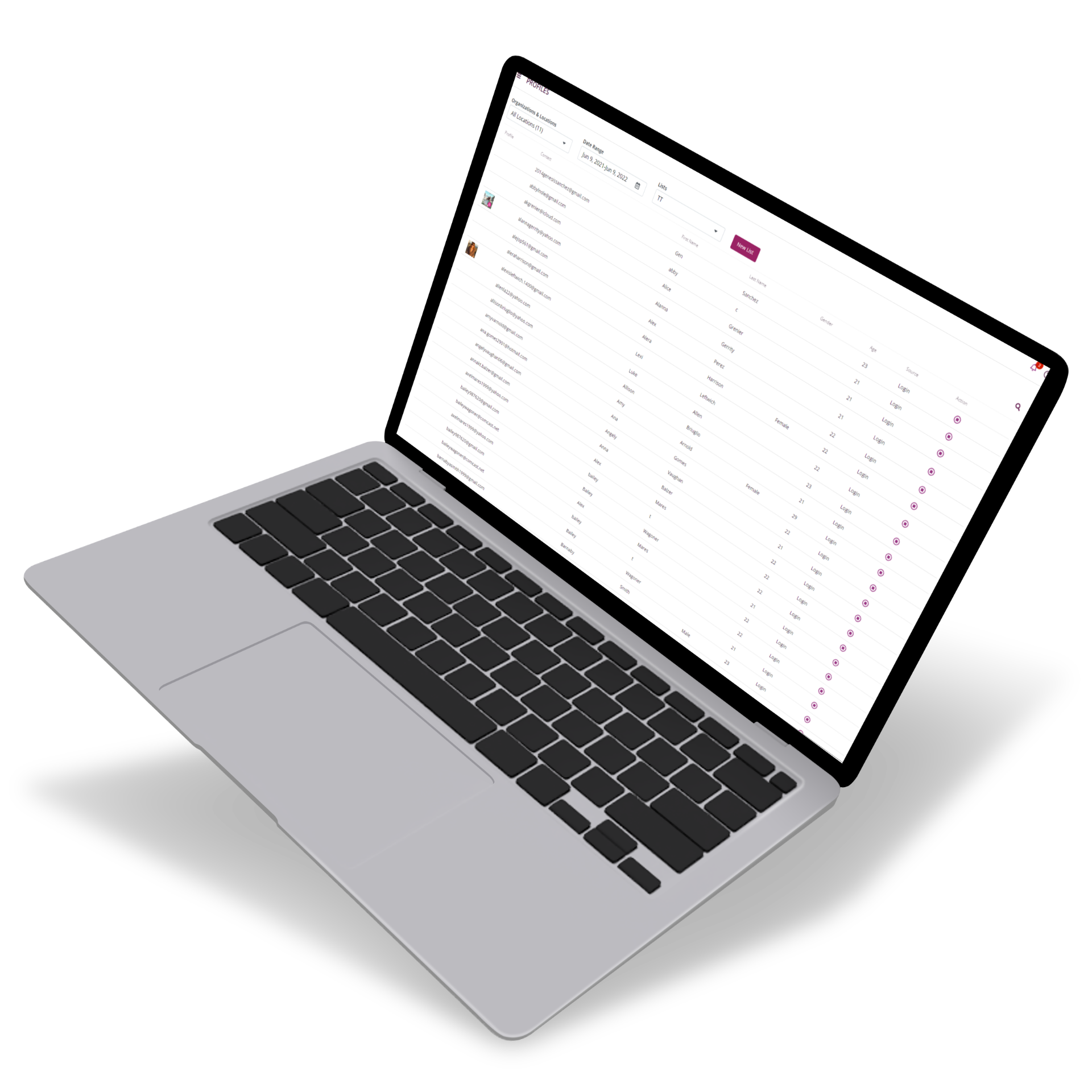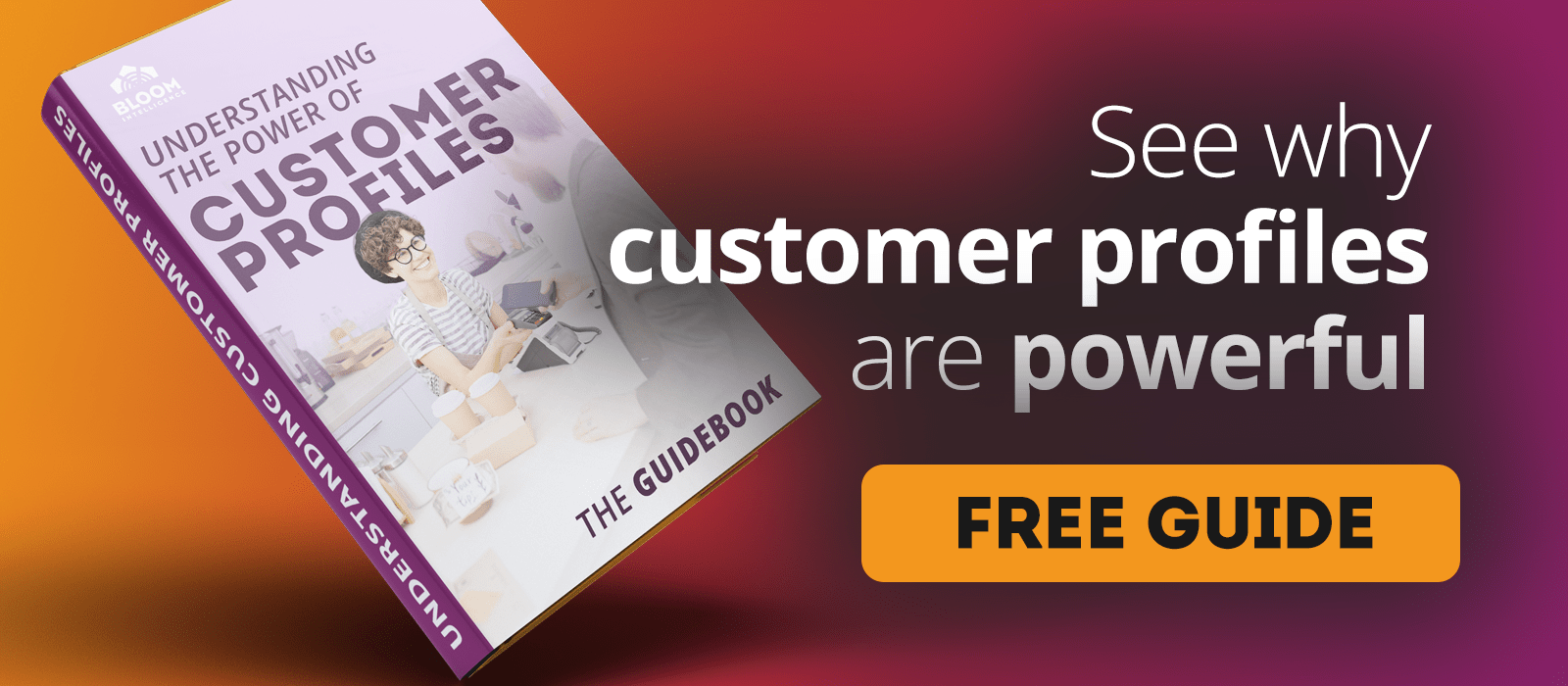It’s no secret that having accurate, comprehensive, clean guest data from multiple online and offline channels is the key to marketing success in today’s competitive marketplace.
For successful marketing, your tech stack should be created with a solid, central focus on guest data collection to unify your guest insight and engagement metrics across all of your tools.
Collecting guest data will not only give you the insights required to execute effective marketing campaigns but it will also recession-proof your marketing strategy.
In this how-to guide, we will explore the importance of collecting guest data, the various ways to collect it, and then touch on how to use the data to improve your restaurant marketing strategy.
Understanding the Importance of Data
No matter what kind of business you are running, the odds are that your guests do not all fall into the same persona.
Differences in age, gender, visit patterns, and other demographics can have a huge impact on how they engage with your marketing, advertising, and your business as a whole.
Ideally, you want to send specific messaging to specific segments of your customer base.
 As a basic example, you can send one message or advertisement to women, and a different message or advertisement to men.
As a basic example, you can send one message or advertisement to women, and a different message or advertisement to men.
Since the message is created to appeal to those specific guests, their engagement with your message will improve dramatically. Likewise, they will remember your brand as one that they can relate to and trust.
Most restaurateurs are still executing mass marketing campaigns. This means they create a single marketing message or advertisement and send it to their entire customer base. There is no personalization of the messages.
Sure, the message may interest some, but segmenting and personalizing messages for each segment can increase engagement and have a tremendous effect on the ROI of your restaurant marketing budget. Its value cannot be understated.
To do this, you need reliable and comprehensive guest data.
Traditionally, it has been difficult for brick-and-mortar business owners to collect valuable data about their guests. It was either too expensive or too time-consuming.
In addition, the data collected was just a snapshot in time. If you wanted more current data, you’d have to invest time and money all over again.
Fortunately, today’s technology now makes it easy to collect offline guest data at scale, and in real-time. More on this is below.
Why Collecting Data is Crucial For Your Business
Consider the statistics:
Here are some recent statistics which compare personalization to mass marketing campaigns.
- A personalized customer experience leads to 77% of consumers being willing to choose, recommend, and even pay more for your products or services.
- In an average marketing campaign, mass marketing leads to an 83% lower response rate than personalized campaigns.
- Personalized campaigns can increase revenue by 5-15% and reduce acquisition costs by up to 50%.
- Personalized content leads to repeat business in over 40% of consumers.
- Calls to Action that are personalized convert a whopping 202% better than non-personalized CTAs.
- A personalized customer experience leads to an average increase of 56% in sales, according to marketers.
- 87% of consumers surveyed say that personalized, targeted, branded content has a positive impact on how they feel about a brand.
These are just a few of the latest statistics showing that personalization in marketing and advertising works. And it can make the difference between the life and death of your business.
But it is impossible to execute personalization without knowing who your guests are and what their interests are. That is why guest data is so valuable for restaurant businesses.
How to Collect Guest Data
Of course, hiring a third-party company to do market research and perhaps even survey your actual guests is an option.
However, these companies can tend to be very expensive. And they can only give you current data. So if you want new data to spot trends or measure marketing effectiveness, you will have to pay for it again.
You could also collect the data yourself. However, the time spent can quickly add up, not to mention it may be off-putting to guests.
Likewise, you will need a way to store and effectively analyze the data you collect.
All of this can quickly drain resources (time and money) and leave you with the idea of simply giving up.
Fortunately, technology has solved these problems and made collecting massive amounts of guest data quick and easy.

Ways to Collect Guest Data
There are several ways to collect guest data from various channels. First, we’ll discuss using your physical location WiFi access points.
The WiFi access points at your place of business are constantly sending out a signal so that nearby devices can identify the network and connect to it.
At the same time, WiFi-enabled devices (smartphones, tablets, laptops) are constantly sending out a signal looking for WiFi access points.
Since the signals contain a unique code specific to each device, your access point can recognize the device from now on.
With a quality restaurant customer data platform, the anonymous data (it doesn’t know who owns the device, only that is it within range) can be collected and stored in a database.
Even if the guest does not log into your WiFi, the system will know the device is there.
At this point, the platform does not know who the user is or any of their demographic/contact information. Therefore, the data is anonymous.
However, valuable guest behavior data can still be collected.
Anonymous data includes information like:
- Guest Dwell Times
- Daily Guests vs. Passers-by
- First-time Visitors
- First-time Visitor Return Rate
- Popular Visit Times
- Projected Lifetime Visits
- Guest Repeat Rates, and more
 The moment you begin using your customer data platform, you’ll start seeing these data points populate in real-time.
The moment you begin using your customer data platform, you’ll start seeing these data points populate in real-time.
It is the most accurate and reliable market research you can obtain because it is updated in real-time and is a view of your actual guest behavior.
Likewise, it comes at a fraction of the cost of other data collection methods and can power a profitable WiFi marketing strategy.
This type of anonymous data can be lucrative for your business. For instance, marketing campaigns can have actual data as measurements.
If you are running a campaign to increase your daily lunchtime visits, you’ll be able to get an accurate view of traffic counts during lunchtime hours and which way it is trending.
If you operate multiple locations, you can use the data to compare traffic and dwell times of different places.
You can also use this anonymous data to help make more efficient staffing and purchasing decisions.
Building Accurate, Comprehensive Customer Profiles
When guests log into your WiFi, they can be taken to a captive portal, also known as a WiFi landing page. Here, they will be required to enter their contact information (usually an email or mobile number) before they can access the internet.
Or, they can log in with a social media account, such as Facebook, with one touch.
The system will immediately build a customer profile for that guest including their contact information and all previous data associated with their device.
From then on, the customer profile will be updated whenever the guest returns.
WiFi technology is now the most effective way to collect massive amounts of accurate guest data quickly and in real-time.
There are, however, other powerful ways to gather rich guest insights such as purchasing habits and visit behavior which we will discuss below.
How Anonymous Data Can Help Your Business
In short, this type of data can be helpful for retail and restaurant marketing because it gives you concrete data about how your guests behave in your physical locations.
For instance, if you notice your average guest dwell time double between the hours of 10 am – 11 am, you can take steps in your marketing and operations to try and bring it back within normal limits.
These types of key performance indicators (KPIs) are something you may not have even noticed without this data. Likewise, for restaurants, being able to “turn” more tables means more revenue for the business.
Above all, the beauty of it is that your guests don’t have to do a thing in order for you to see these KPIs, providing you with actionable insights to optimize your business.
You can also use the data to spot visitor behavior trends such as an increase in foot traffic, or a shift in your peak traffic hours.
In addition, you can use this anonymous data to help measure marketing ROI.
Did you run a campaign to get more people into your happy hour? Did you run a campaign to fill your seats on Mother’s Day? With anonymous guest data, you will be able to see tangible data to track campaign effectiveness and optimize over time.
Advanced Guest Data Collection
As has been noted above, there are other ways to collect guest data from your other tech stack tools. Here are a few:
Online Ordering Platforms – when guests order online, these systems can gather data such as purchasing habits/history, emails, phone numbers, and more, leading to powerful online ordering marketing campaigns.
Online Reservation Systems – much like online ordering platforms, these systems can gather additional on-premise visit behavior data.
Restaurant Websites – visitors to your website can sign up for newsletters, promotions, or offers. Contact information and website engagement data are collected.
Social Media Platforms – when guests use their social media platforms to log into any of your tech platforms, further demographic data can be collected.
When a guest logs into your WiFi, orders online, signs up on your website, or makes an online reservation, the benefits for your business can skyrocket.
To emphasize, now you have that person’s contact information, demographics, behavior data, and even geographic data – marketing gold.
A customer profile is created for that person inside your restaurant customer data platform and all previous anonymous data associated with their device will also be added to their profile.
Consequently, you will now have access to much more detailed insights about your guests, such as their:
- Name
- Email address
- Gender
- Age
- Phone number
- Postal code
- Ratings
- Presence analytics by location
- Churn likelihood
This kind of accurate, real-time data about your guests’ behavior and demographics can have a tremendous impact on the success of your marketing efforts & operational efficiencies efforts. Here’s how.
Using Guest Data to Improve Restaurant Marketing
As your guest database begins to grow, you can begin sorting and filtering it into individual lists (personas) based upon certain metrics or demographics, including:
- Number of all-time visits to your restaurant
- Any number of days since their last visit
- Their average dwell time (average time spent in your restaurant)
- Age and Gender
- Contact information (email, phone)
- and much more.
As discussed above, sending targeted messaging to a specific grouping of guests provides a much higher ROI.
For instance, you can create a list of women, over 30, who have visited your business more than 5 times. Then you can send a more engaging targeted marketing message specifically written and tailored for that type of guest and their needs and interests.
This is known as personalization and segmentation, and it can dramatically improve guest engagement and purchasing decisions.
To illustrate, here are some recent statistics:
- An article from CMO.com stated that targeted advertisements are, on average, almost twice as effective as non-targeted ads.
- eConsultancy.com reported that 74% of marketers say targeted personalization increases guest engagement.
- Also, in a study by The Direct Marketing Association, segmented and targeted emails generate 58% of all marketing revenue. And 77% of ROI comes from segmented, targeted, and triggered campaigns.
- Certainly, without guest data and contact information, the task would be either impossible or very expensive to execute at scale.
The major benefit of executing targeted segmented marketing campaigns is that you are sending a specific message to guests who are more likely to engage and respond.
So, with the ability to passively collect guest data like contact information, demographics, physical behavior, customer ratings, purchasing habits, and other targeted information, you can deliver this type of highly effective messaging to help your business grow rapidly.
 In summary, by understanding your guest’s behavior and demographics, you can drive more engagement and higher ROI in your marketing campaigns.
In summary, by understanding your guest’s behavior and demographics, you can drive more engagement and higher ROI in your marketing campaigns.
Above all, personalization of your guest’s experience will build familiarity and loyalty between you and your guests, driving solid increases in per-person averages and customer lifetime values.
You can also leverage this data to decrease operational expenses by discovering negative trends you could not see before.
No matter what size or type of business you operate, your guests are your number one asset. Likewise, customer acquisition, retention, and maximizing your revenue per customer should be among your business’s primary goals.
If you manage a brick-and-mortar establishment, such as a restaurant or coffee shop, you may not have an efficient way to keep track of and know every guest who comes into your locations.
Collecting guest data is the first and most important step to personalizing your guests’ experiences and maximizing your revenue per guest.
This foundation allows you to measure your guest behavior online or offline. You can build automated, personalized marketing campaigns to measure guest satisfaction, save at-risk guests, increase guest frequency, and much more.
To find out more about Bloom’s restaurant marketing and customer data platform, and how it can grow your business, schedule your free demo below.
Bloom Intelligence Customer Data Platform
If you are ready to start building your own powerful restaurant customer data platform and collecting guest data from all of your channels, take a look at Bloom Intelligence.
By building your own restaurant customer data platform you will take control of your own guest data, and unlock guest insights that will improve the success of your business.
Then, combine this with our unified WiFi marketing automation and reputation management to save time with automation, and money with the consolidation of services into one unified platform, increasing your guest lifetime values.
In today’s competitive environment, Bloom can give you the competitive edge for success!
If you’d like to see the Bloom restaurant marketing platform in action, and discover how you can grow your business through guest intelligence and marketing automation, schedule a free demo or call 727-877-8181.







.svg)